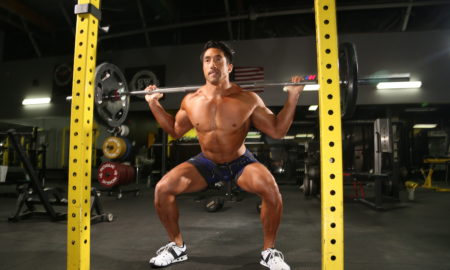 Q: I’m curious to know if you lock out your reps on exercises like presses, extensions and pushdowns or keep continuous tension? If you do not lock out, is it because you think it’s dangerous for the joints?
Q: I’m curious to know if you lock out your reps on exercises like presses, extensions and pushdowns or keep continuous tension? If you do not lock out, is it because you think it’s dangerous for the joints?
A: It depends. I always lock out on exercises that contain a true peak-contraction effect, such as leg extensions, pressdowns and dumbbell kickbacks; however, I do it carefully, making sure to slow down just a bit as I near lockout while focusing intently on squeezing into the peak contraction. What I do not do is use momentum to reach lockout, nor do I ever hyperextend the joint. When it comes to exercises where there is no true peak contraction, like bench presses, military presses and leg presses, for example, I generally do not go to full lockout and opt to keep continuous tension on the muscle.
Now, if you know me and read my material regularly, then you are aware that I’m a strong proponent of constant change and variation in training methods, techniques and protocols. So, yes, there are times I will flip the script and actually lock out on non-peak-contraction exercises. At those times I’m simply looking to change the feel of a movement or concentrate harder on forcing more complete contractions on every rep. I am generally using lighter weights, moving through the range of motion at very slow tempos and consciously flexing the muscle at the end point of each rep.
Unfortunately too many trainees out there are too focused on simply getting a bar from point A to point B, which is where problems can and do arise.
Editor’s note: Eric Broser’s new DVD “Power/Rep Range/Shock Max-Mass Training System” is available at Home-Gym.com. His e-books, Power/Rep Range/Shock Workout and The FD/FS Mass-Shock Workout, which include complete printable workout templates and Q&A sections, are available at
X-Workouts.com.




















You must be logged in to post a comment Login